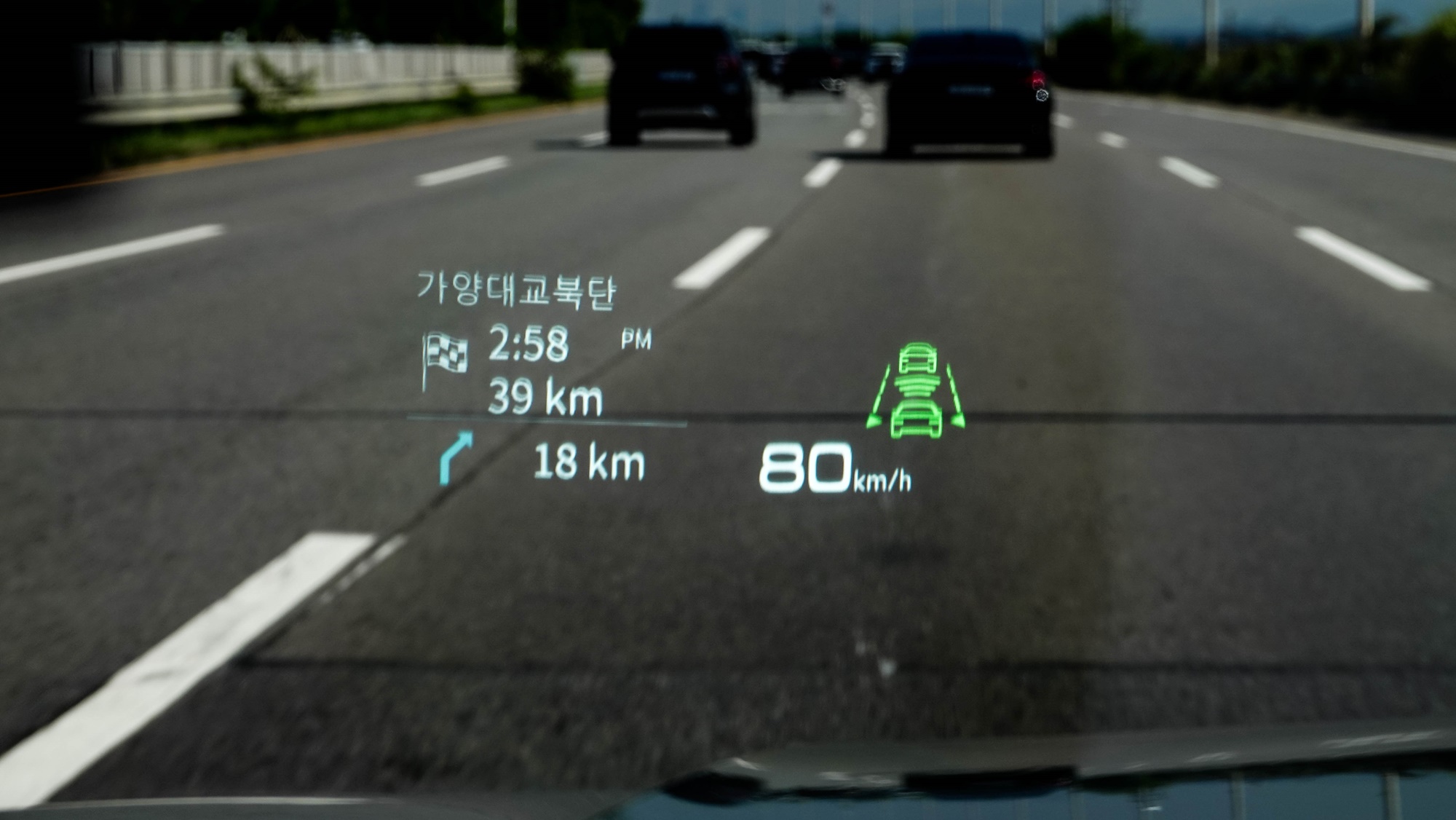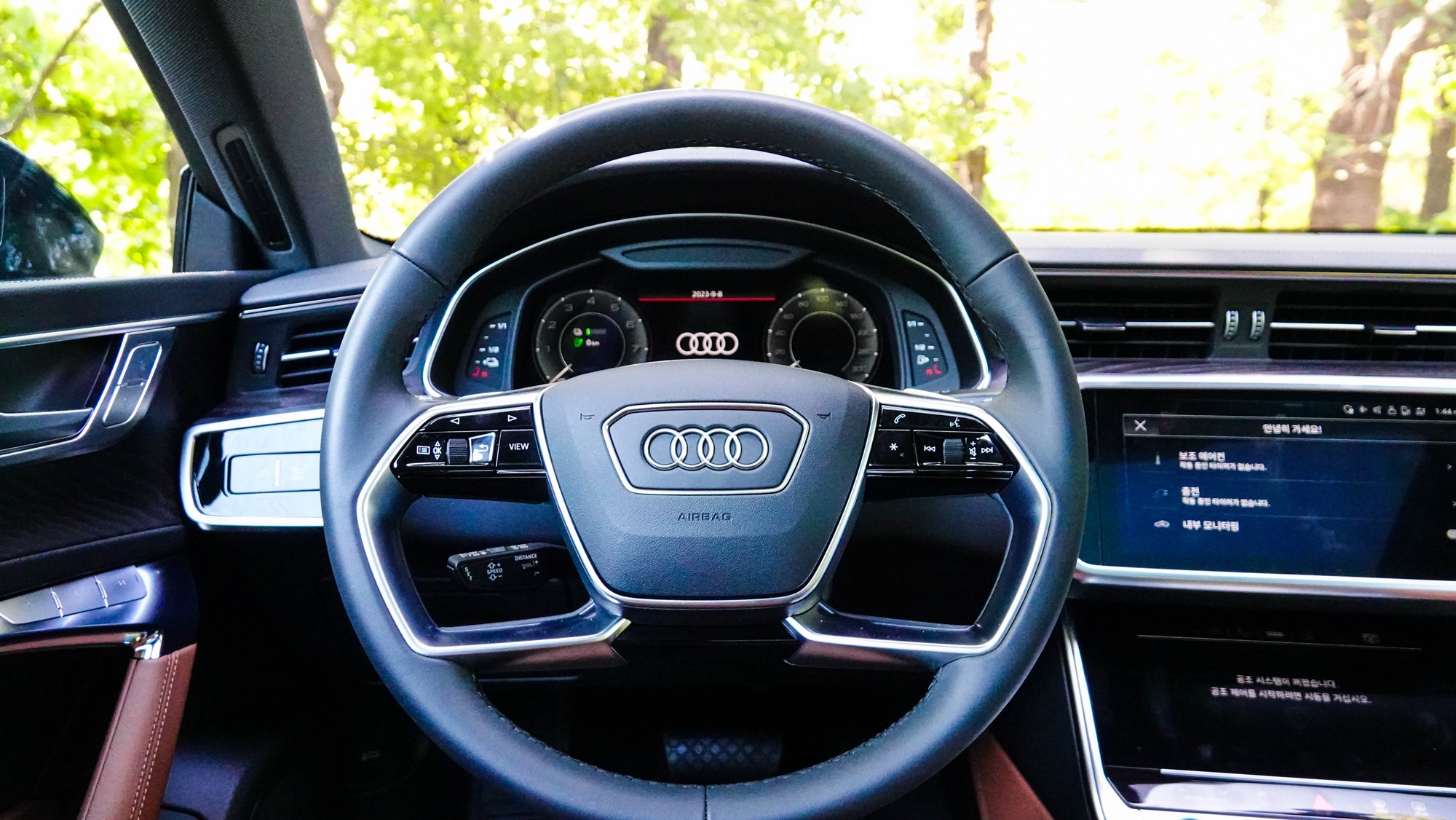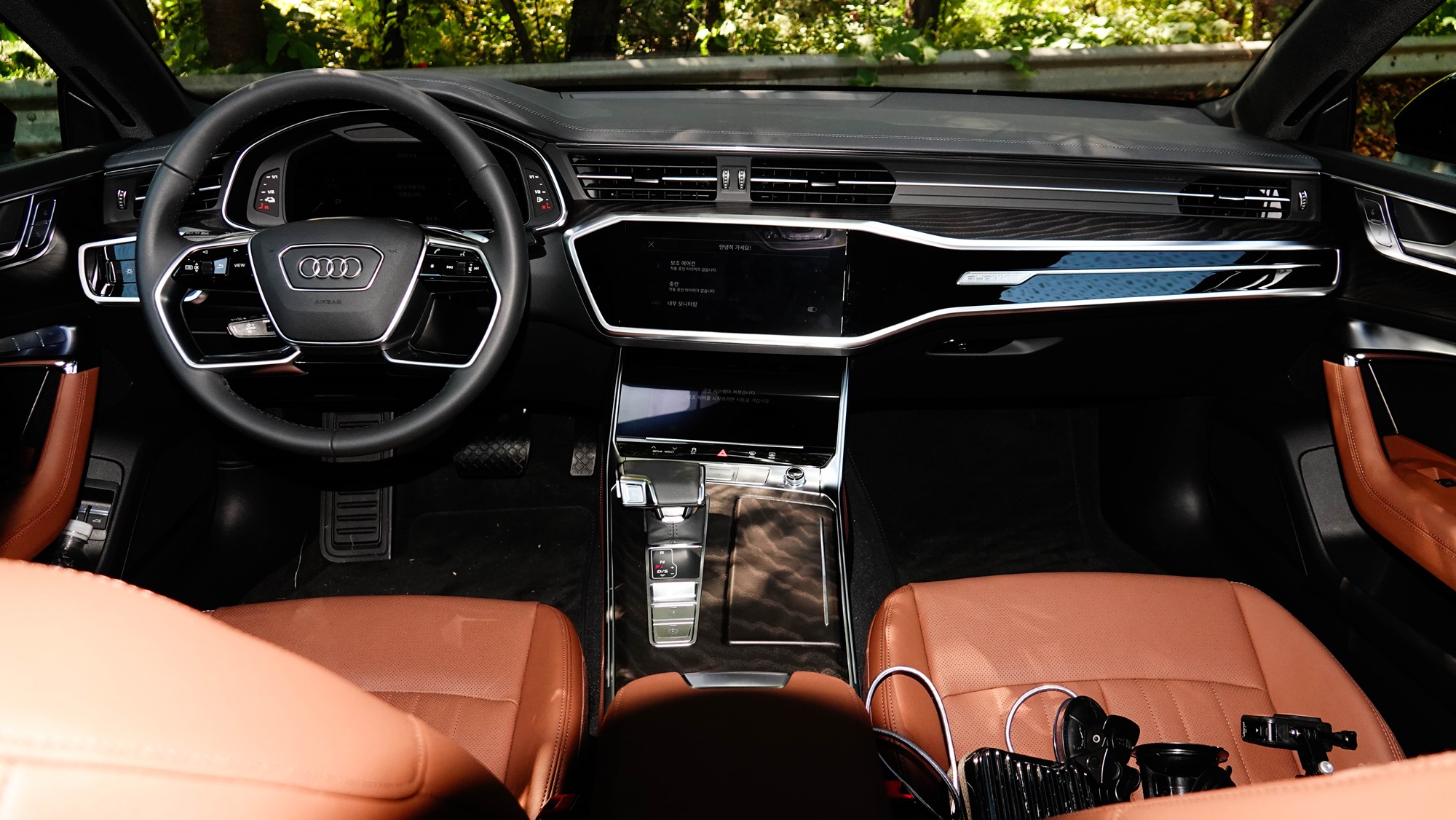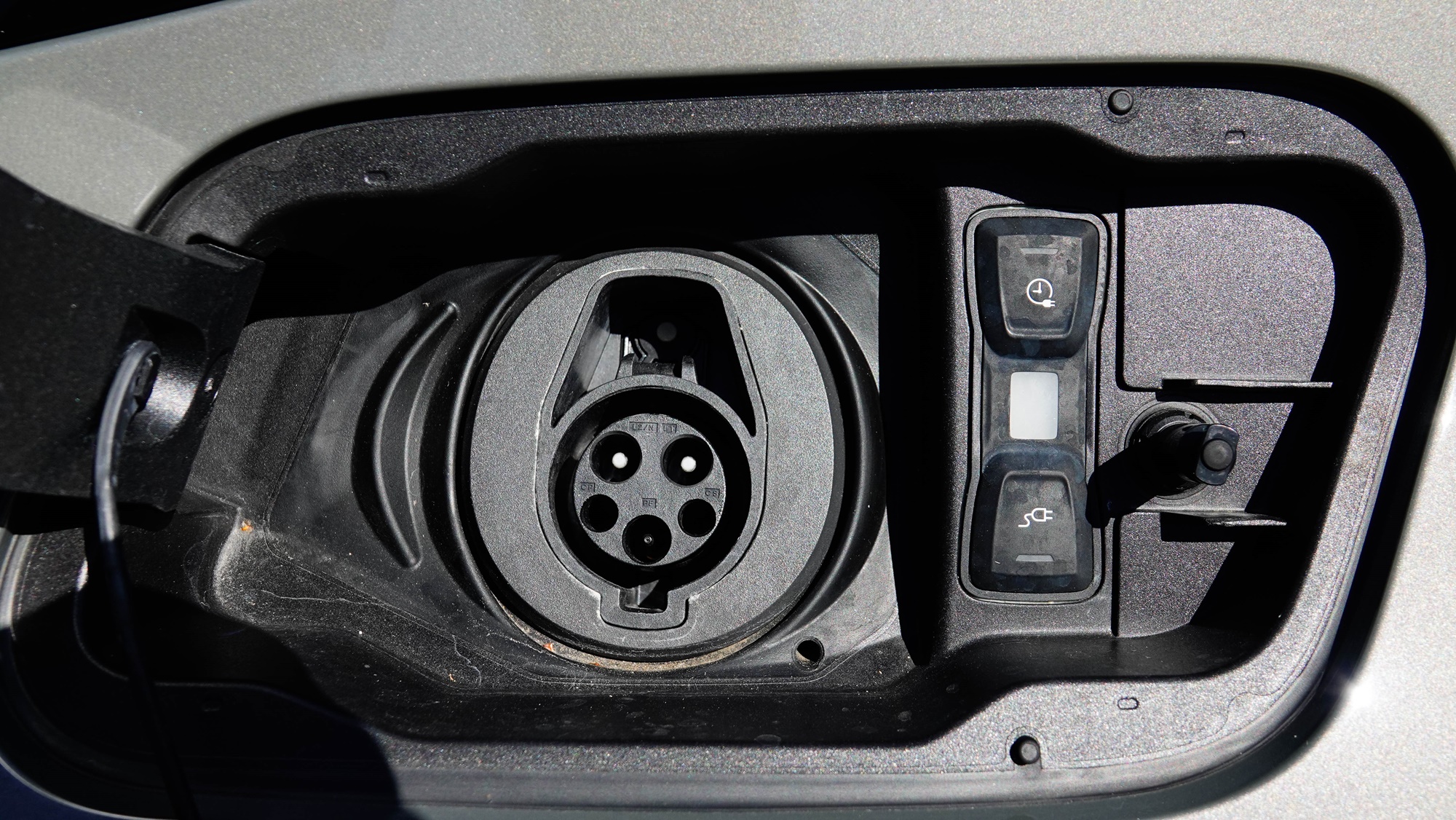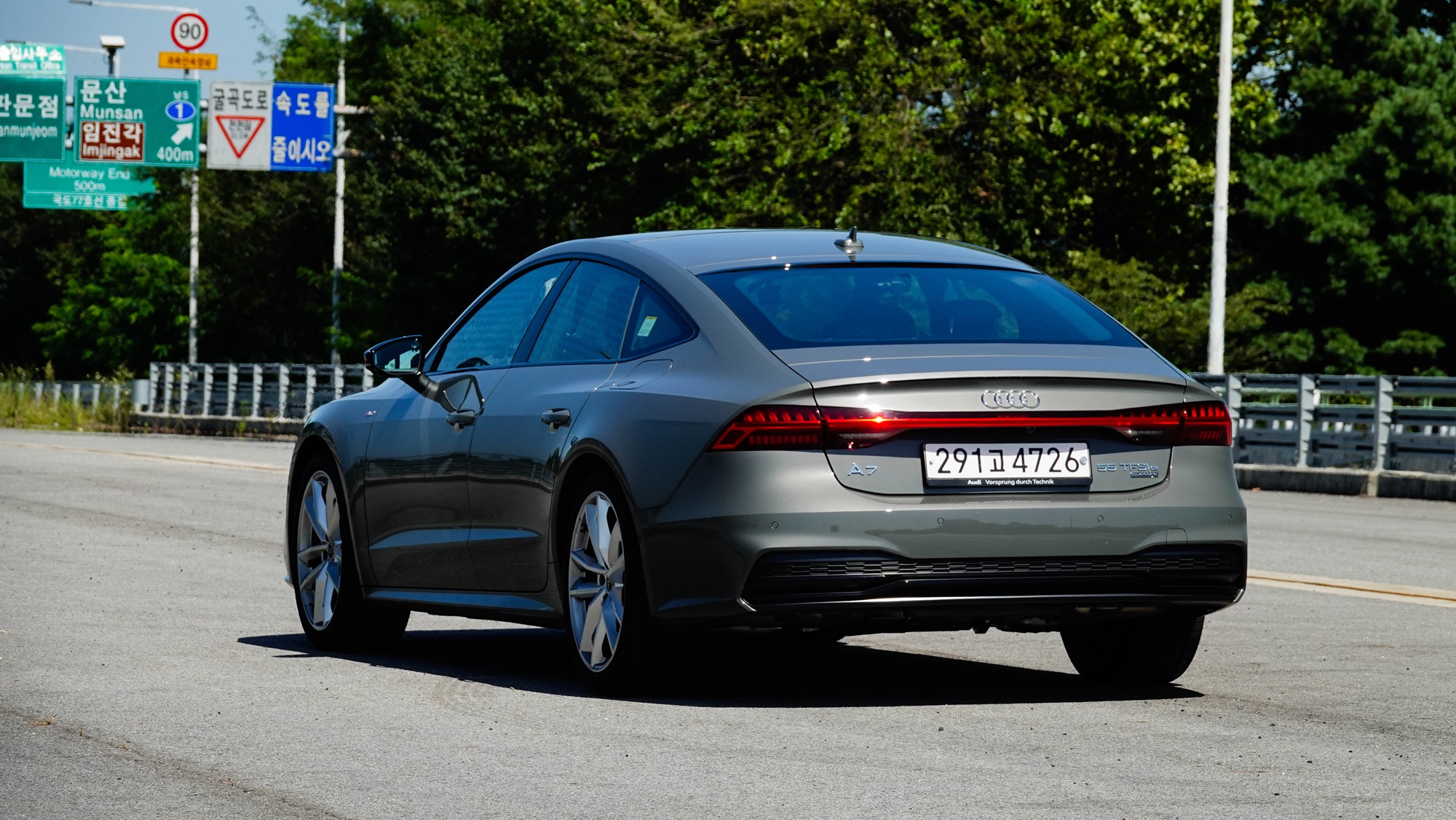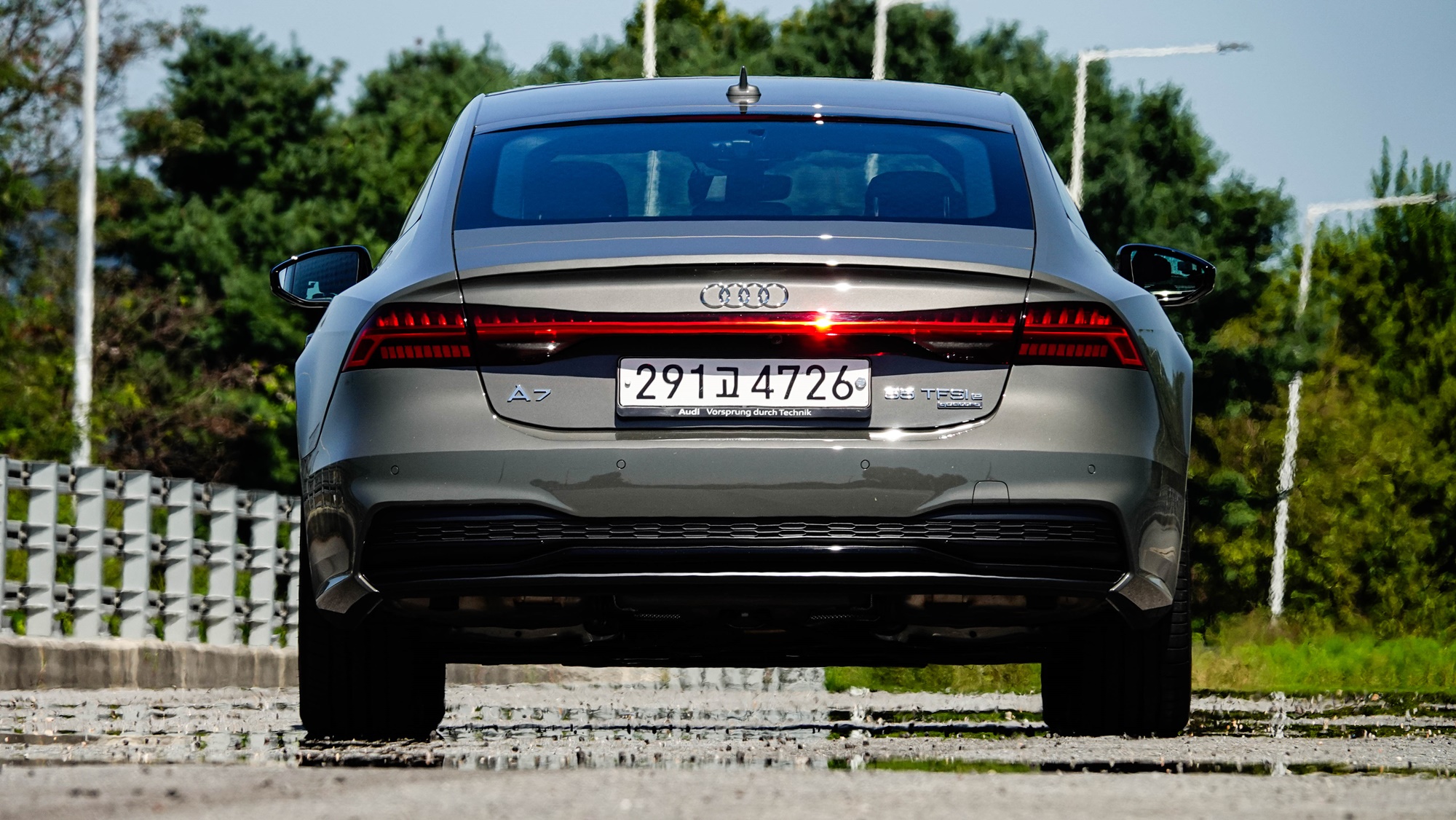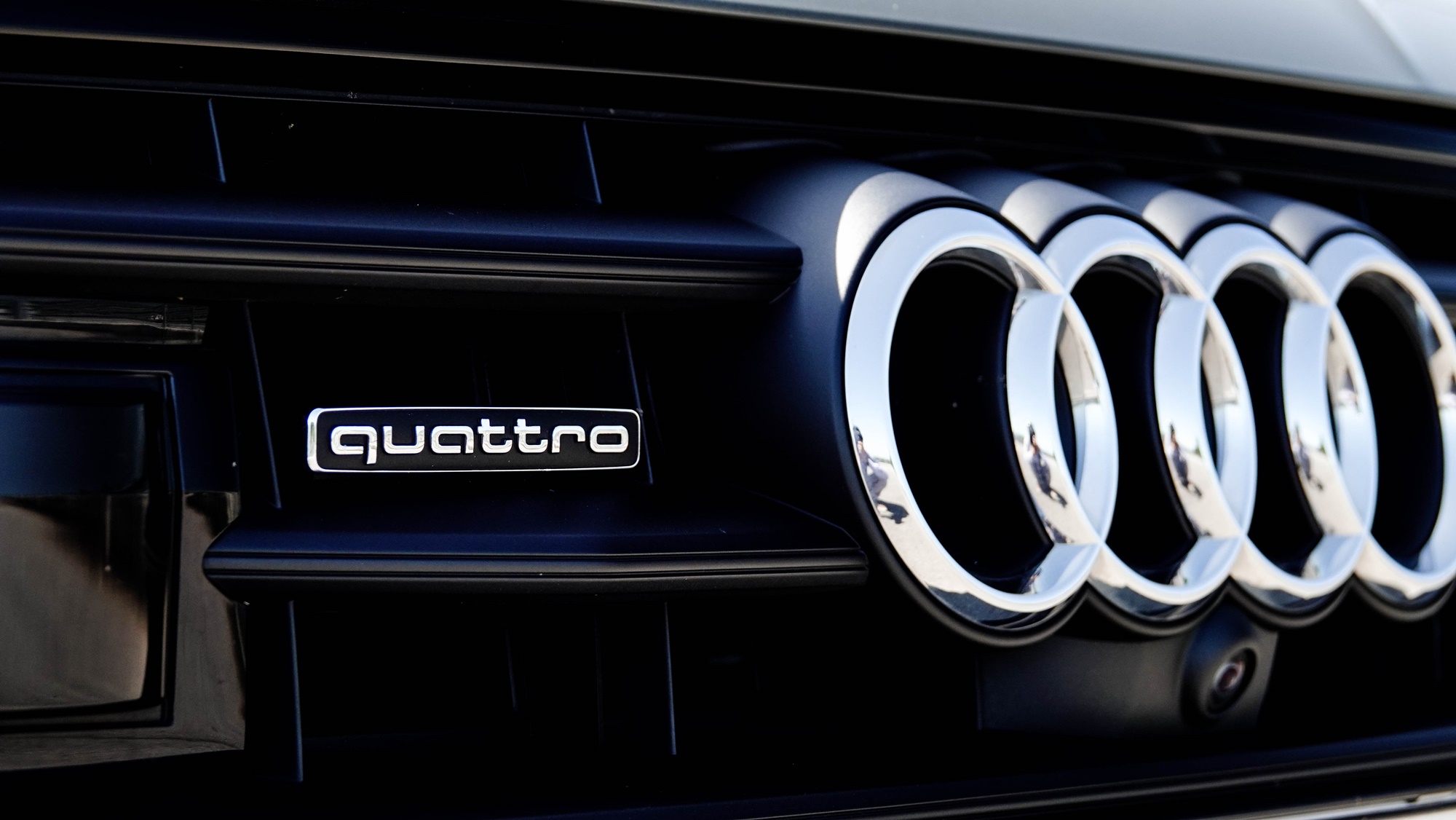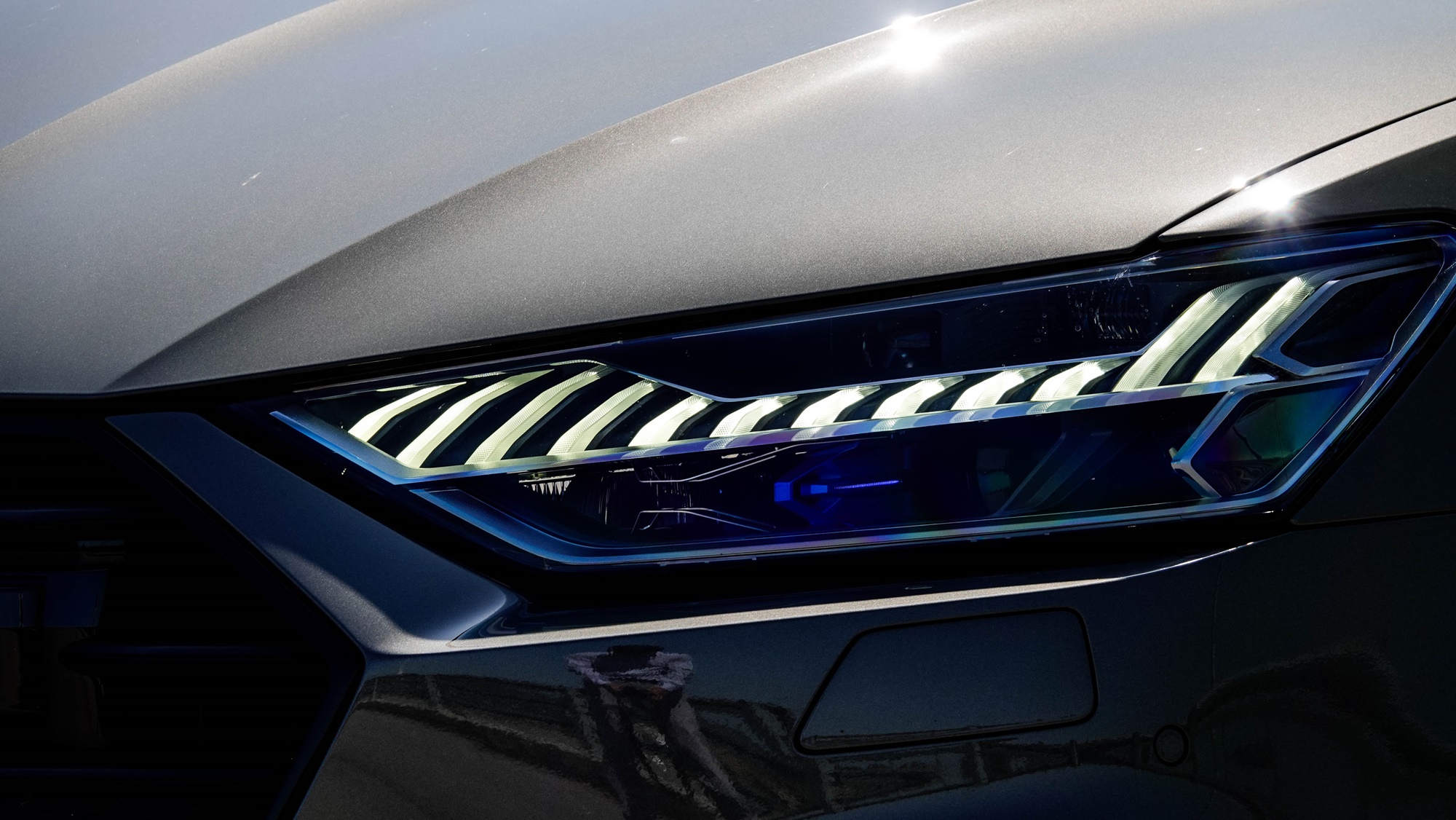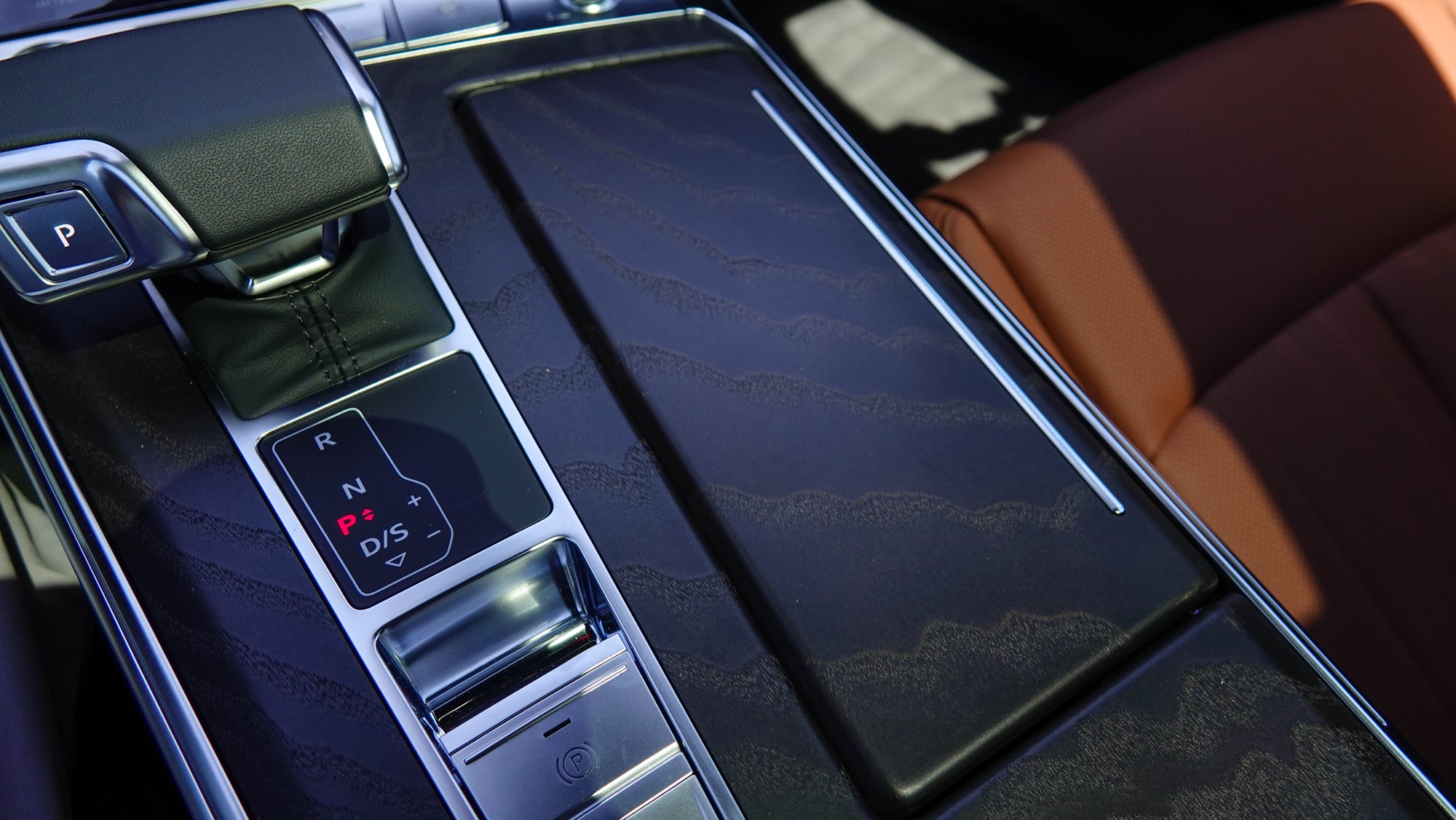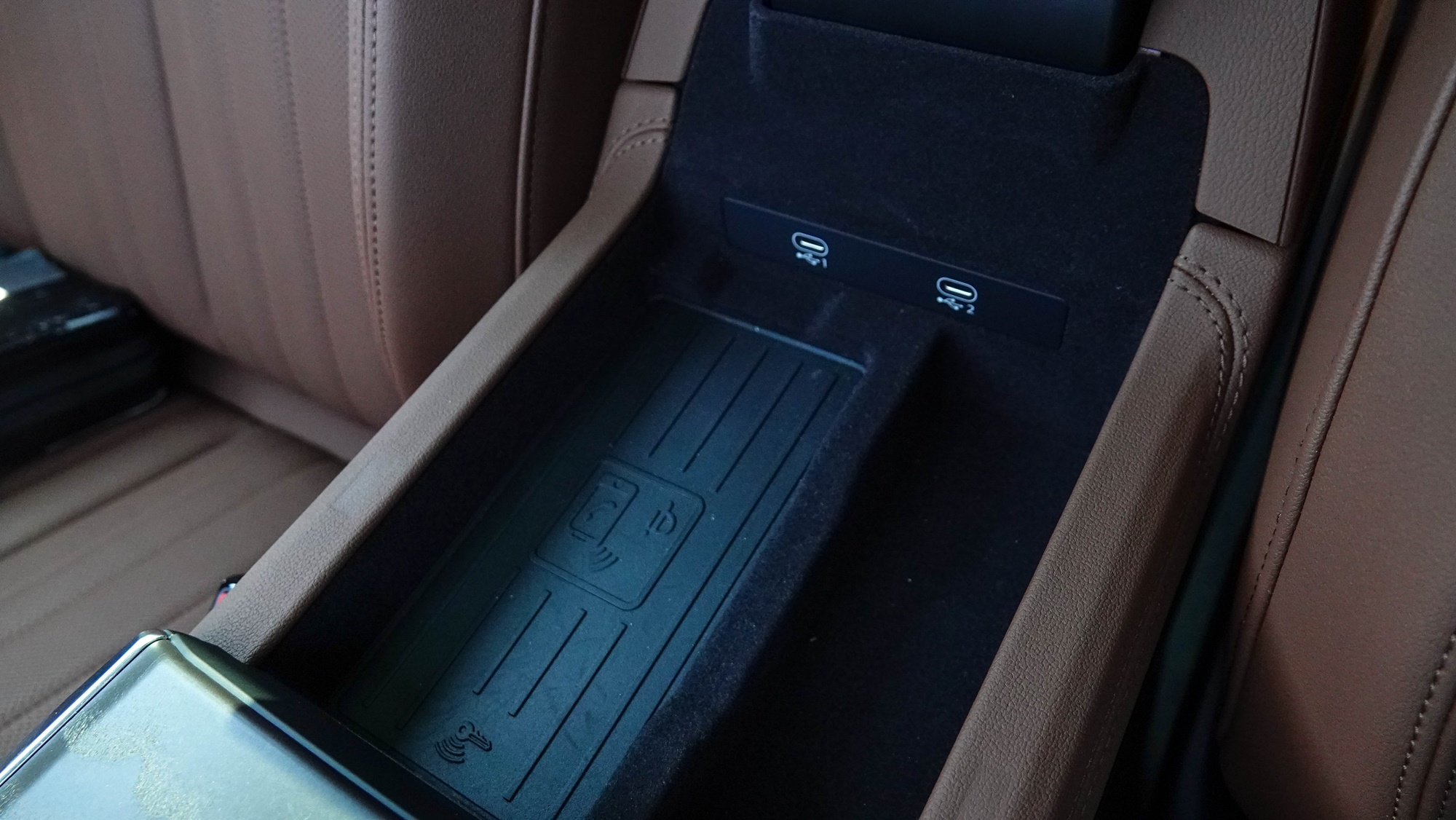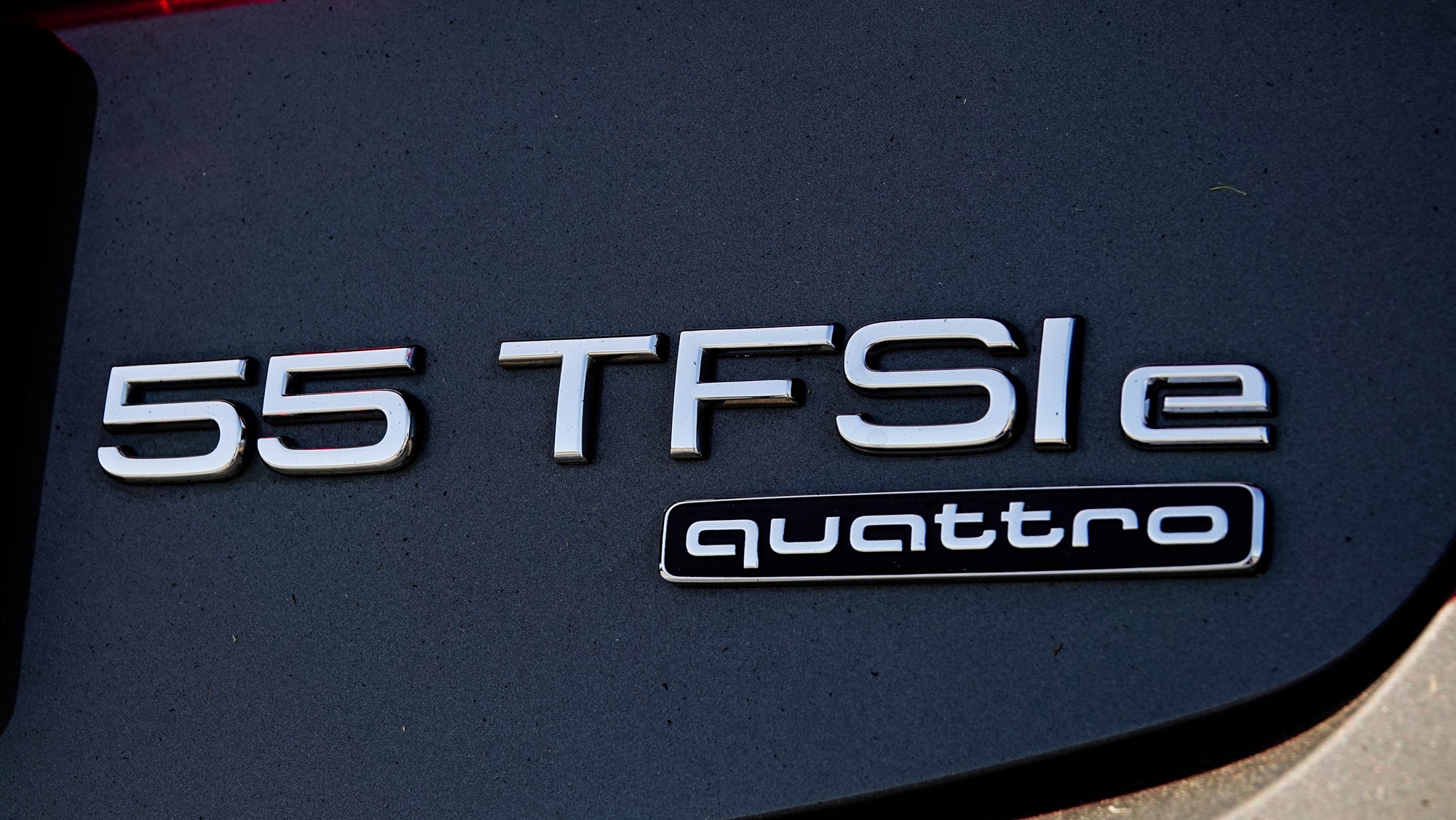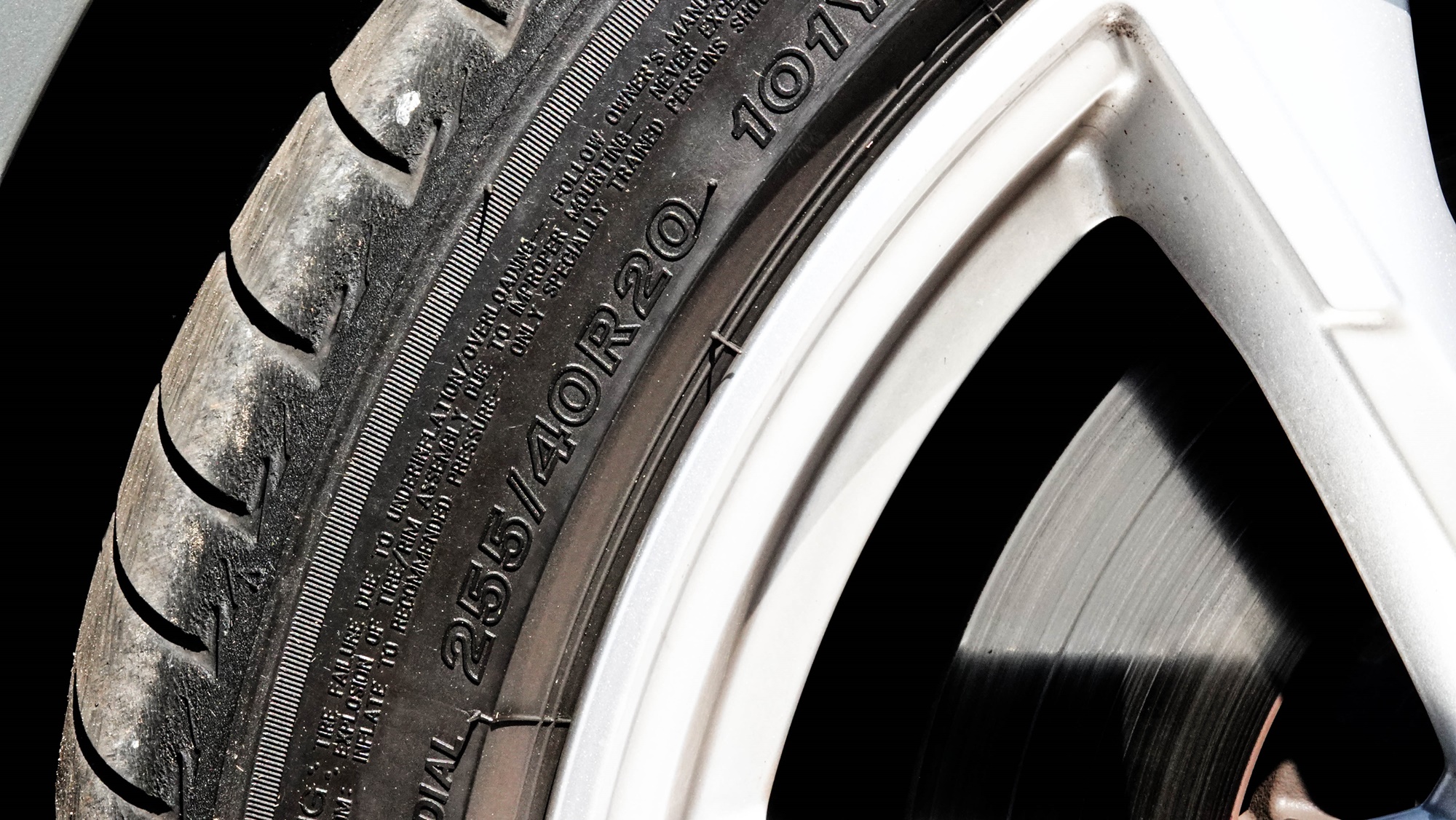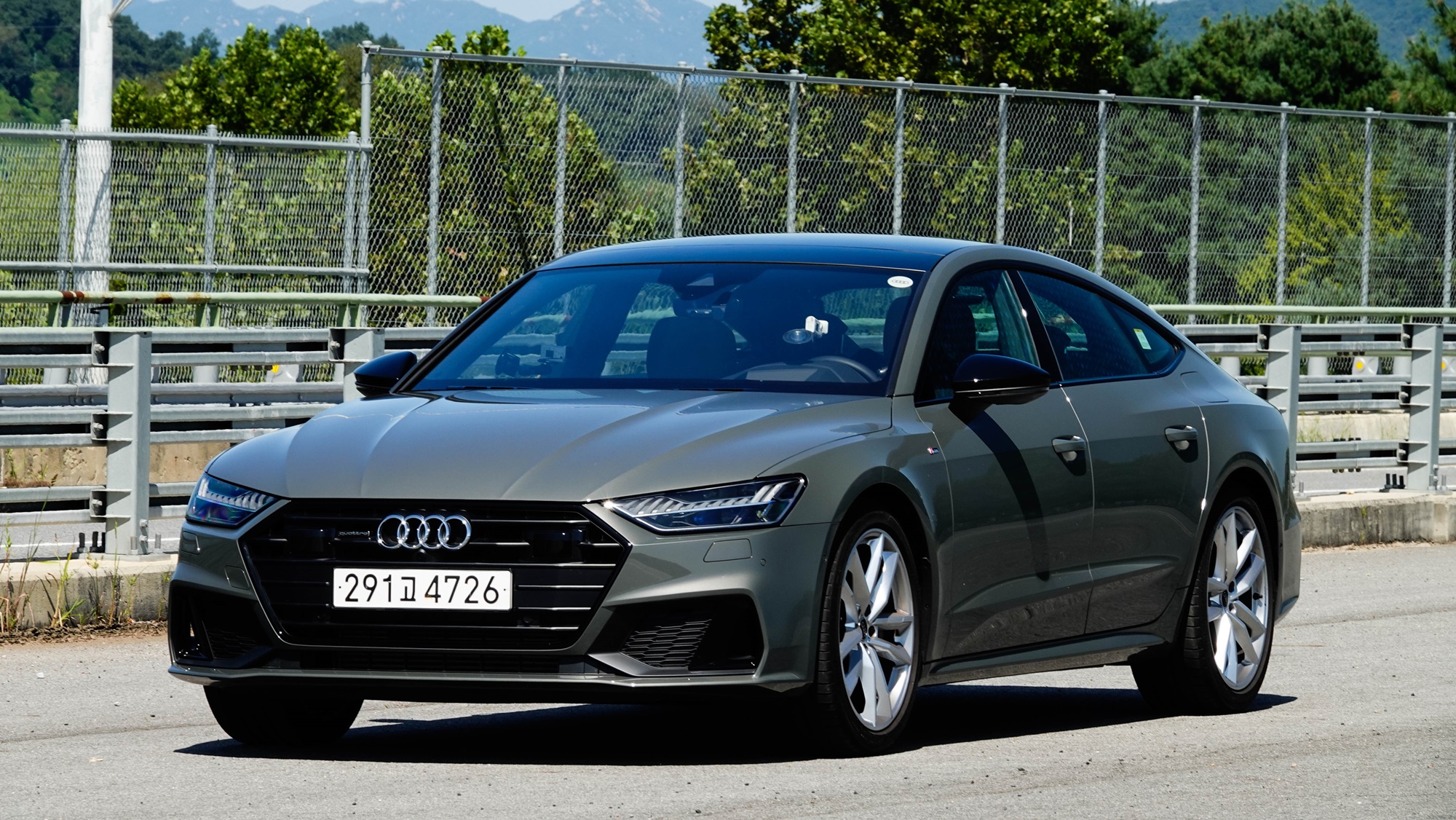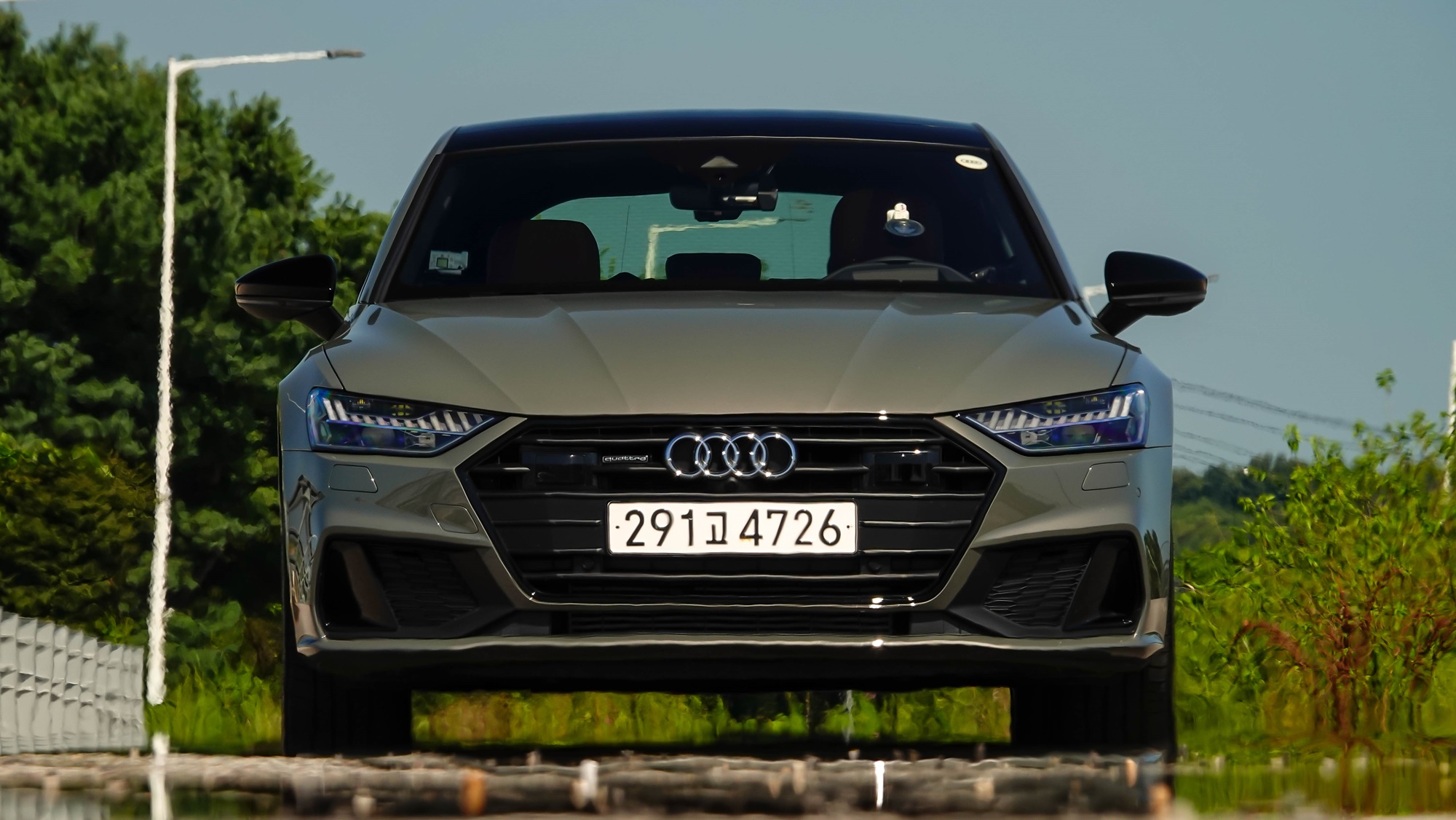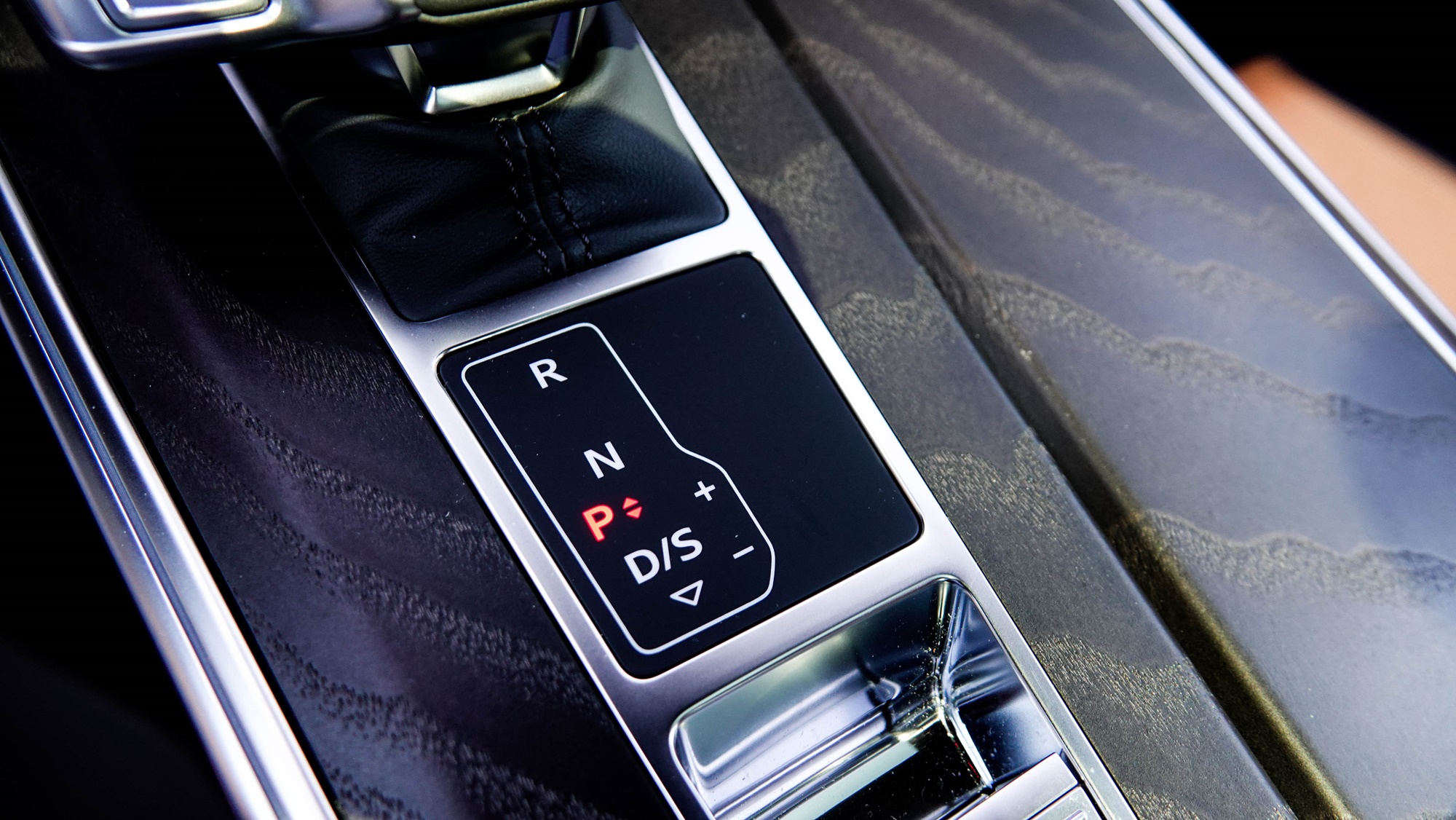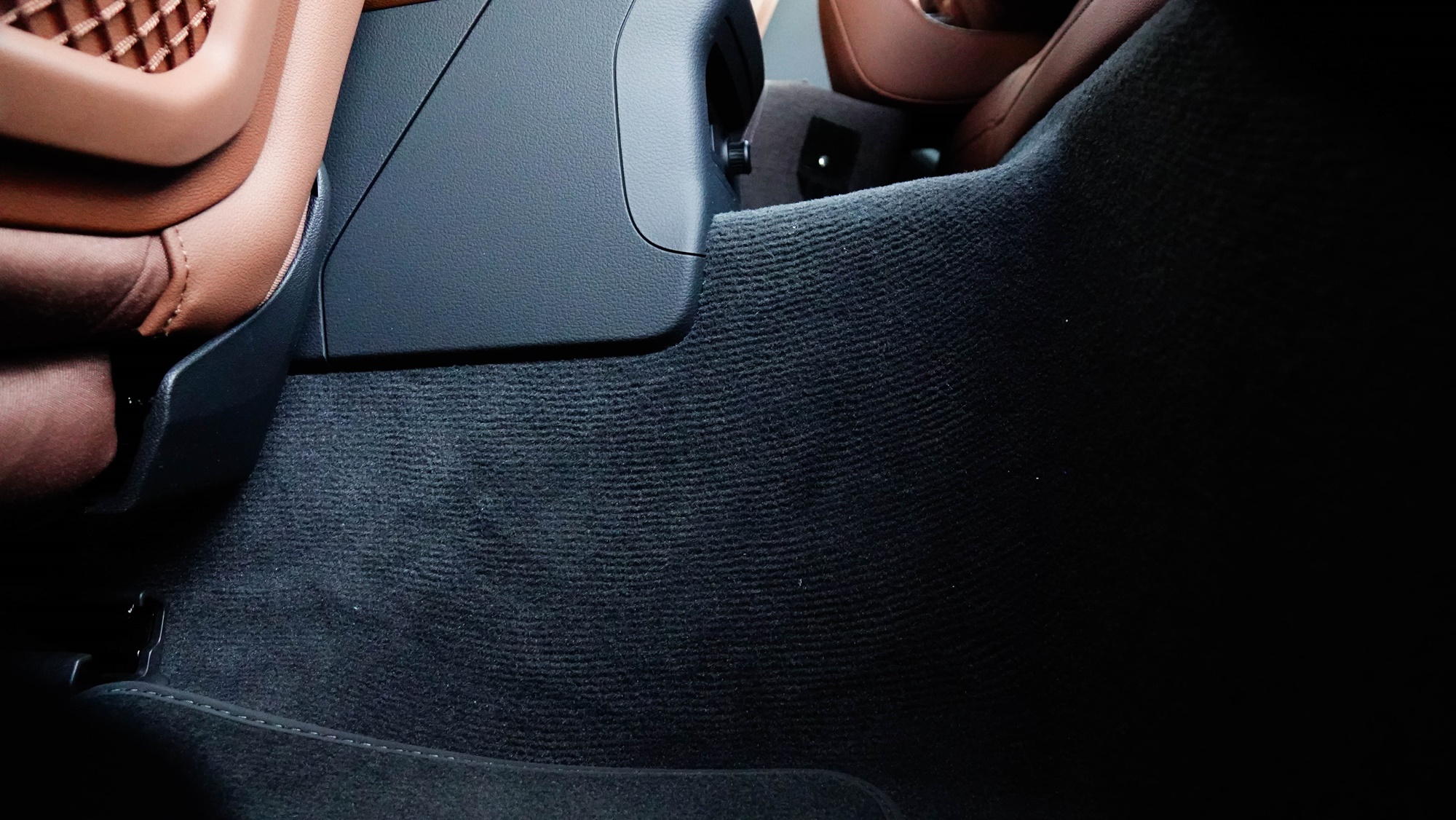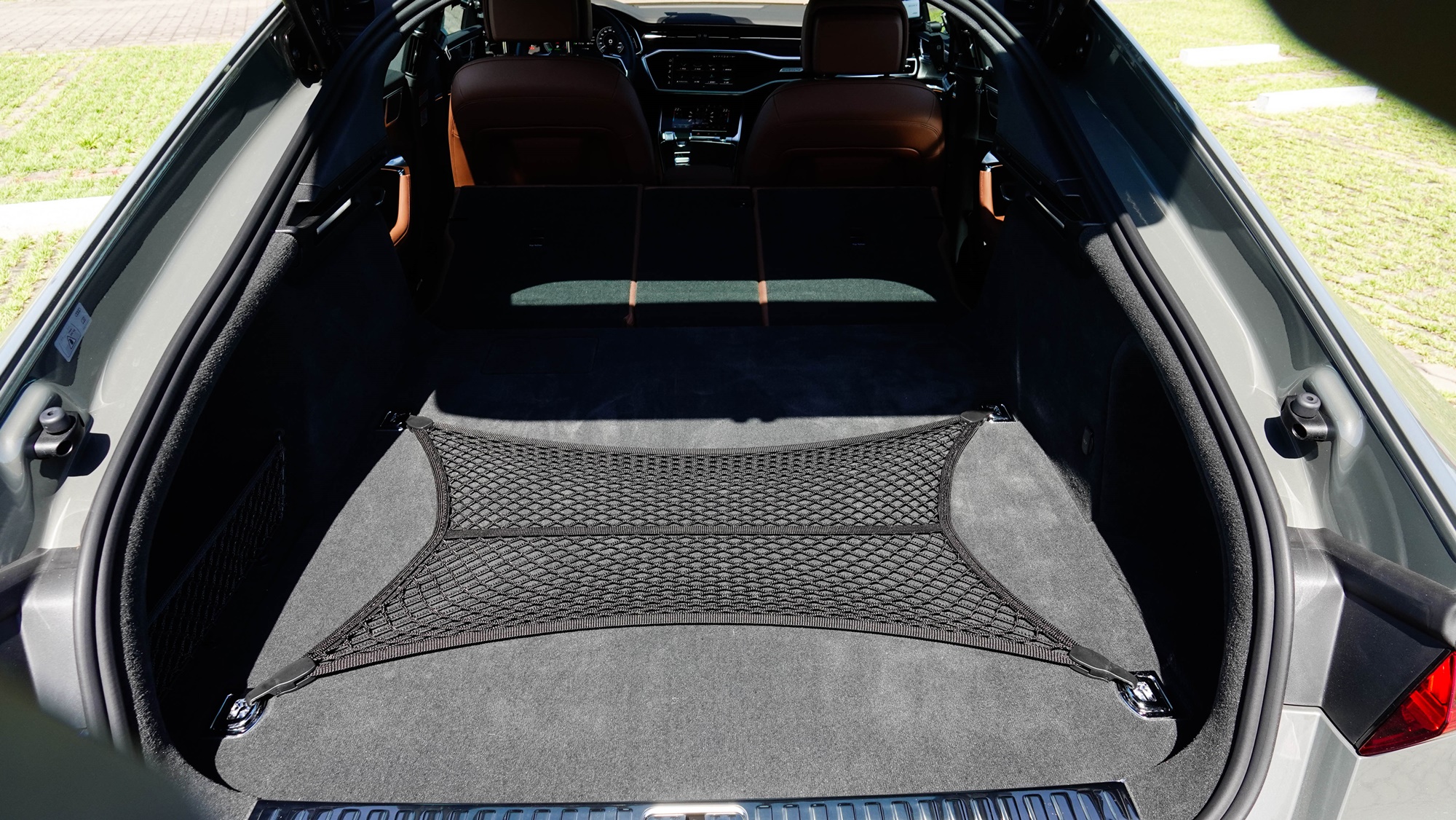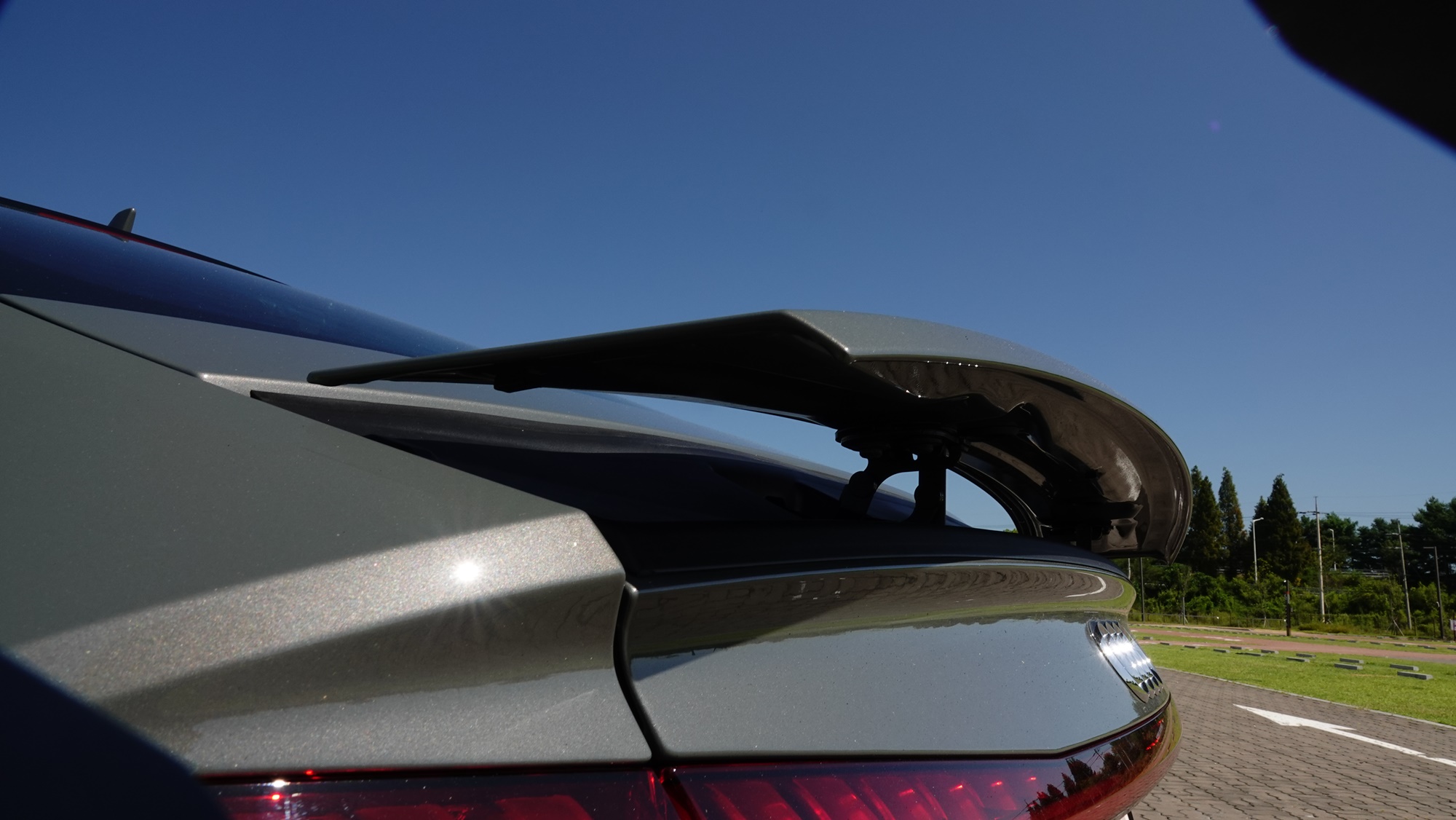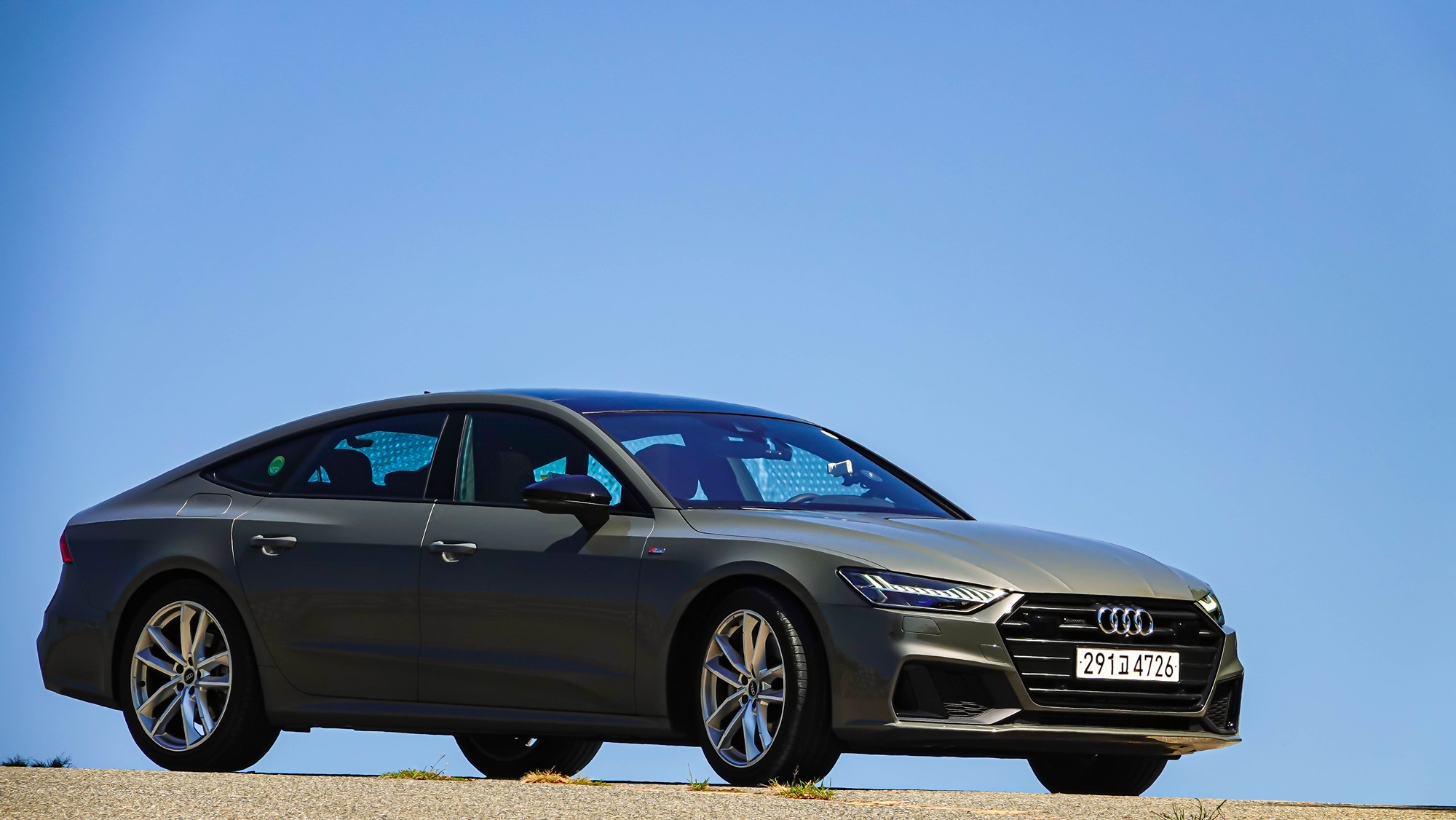
The name is long. “The All-New Audi A7 55 TFSI e Quattro Premium” — it’s a mouthful. Trying to encapsulate the brand, powertrain, body type, segment, and more inevitably leads to a lengthy title. Such ambition is evident in its name.
This model takes the 4-door coupe, the A7, and applies a plug-in hybrid setup. It looks stunning as a coupe. Not every coupe can boast beauty, but an Audi coupe is undeniably impressive. You can gaze at it for ages without losing interest.
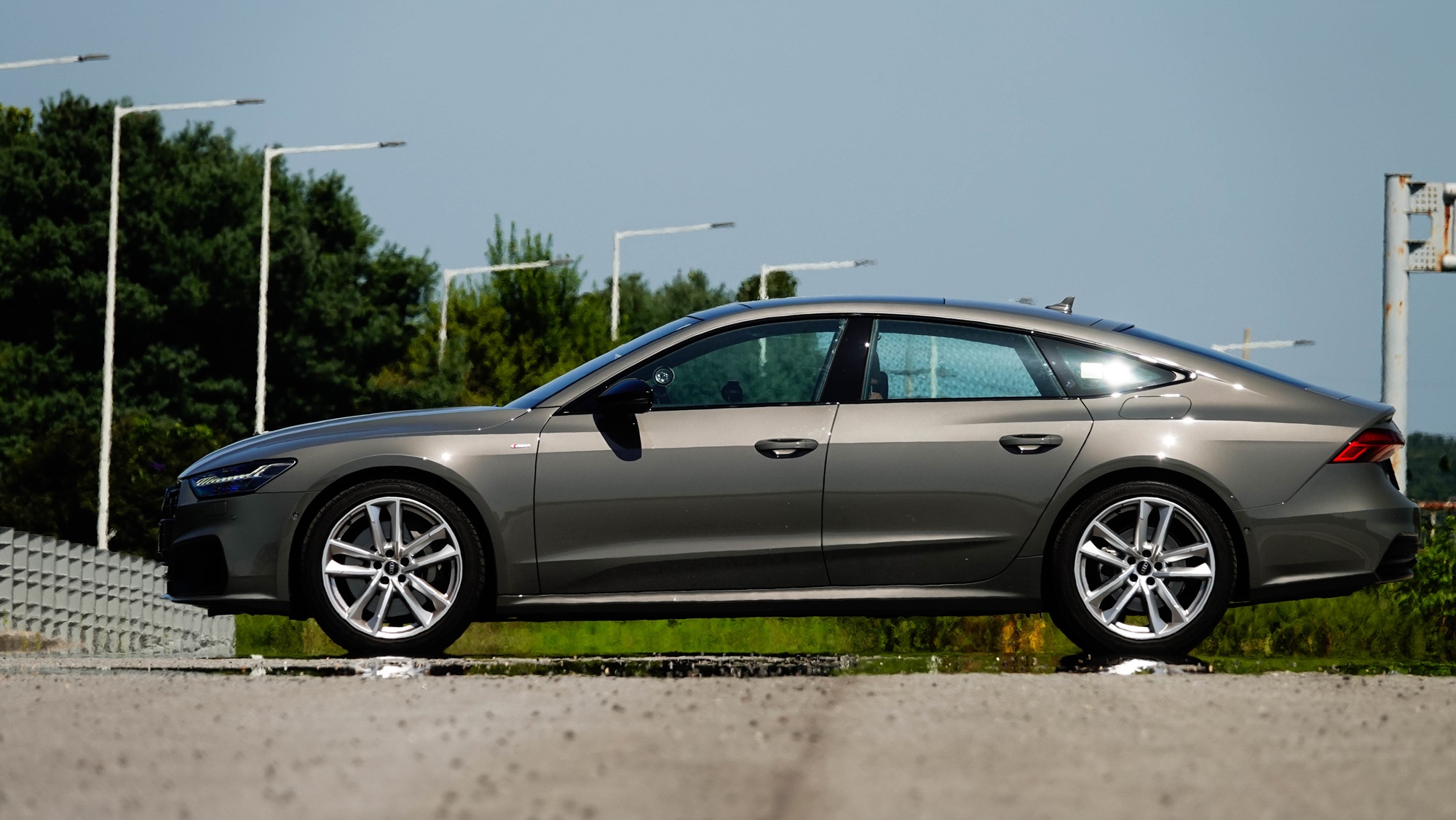
Moreover, it’s practical. Being a 4-door model, it blends the stunning aesthetics of a coupe with the convenience of four doors, successfully balancing form and function. Of course, you can’t have it all. The low roof and elevated center tunnel can’t completely eliminate constraints in rear-seat space. This is the limit of what a coupe can offer. If you crave more spaciousness, you’ll have to sacrifice coupe styling. It’s akin to sucking in your stomach a little for the fitting of a crisp suit.
The plug-in hybrid is among the most complex powertrains. It incorporates an engine, motor, battery, and charging system. Remove the engine, and it turns into an electric vehicle; take out the motor, and it becomes a conventional gasoline car. When the battery depletes, gasoline powers the engine, and when the gasoline runs out, electricity runs the motor. The plug-in hybrid is acclaimed for being a convenient eco-friendly vehicle that does not impose the burden of constant charging—a key reason it’s considered the most practical eco-friendly car.
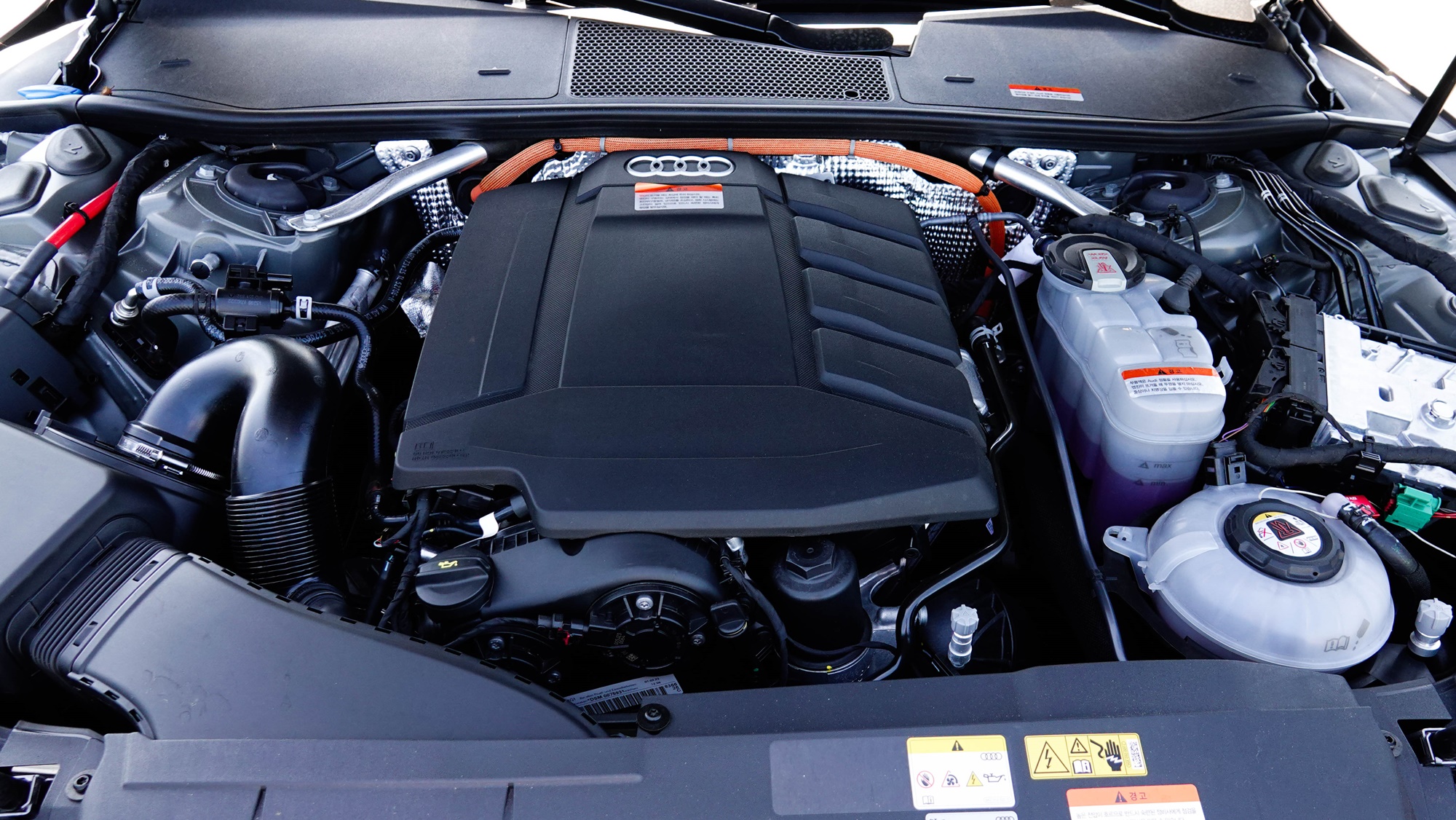
The engine is a turbocharged 2.0L inline 4-cylinder direct injection setup delivering a maximum output of 252 horsepower. Naturally, it can operate solely on the engine. The electric motor draws power from a 14.1 kWh lithium-ion battery, producing 143 horsepower. The total system output, combining engine and motor, is 367 horsepower.
The 7-speed S-tronic automatic transmission manages this power. It marks 1,500 rpm in 7th gear at 100 km/h and 5,000 rpm in 3rd gear.
With a curb weight of 2,160 kg, the power-to-weight ratio stands at 5.9 kg per horsepower. Based on strength-to-weight considerations, it performs relatively light, with the manufacturer claiming a 0 to 100 km/h acceleration time of 5.8 seconds. My best recorded time with a GPS timer was 5.92 seconds. The top speed is capped at 210 km/h.
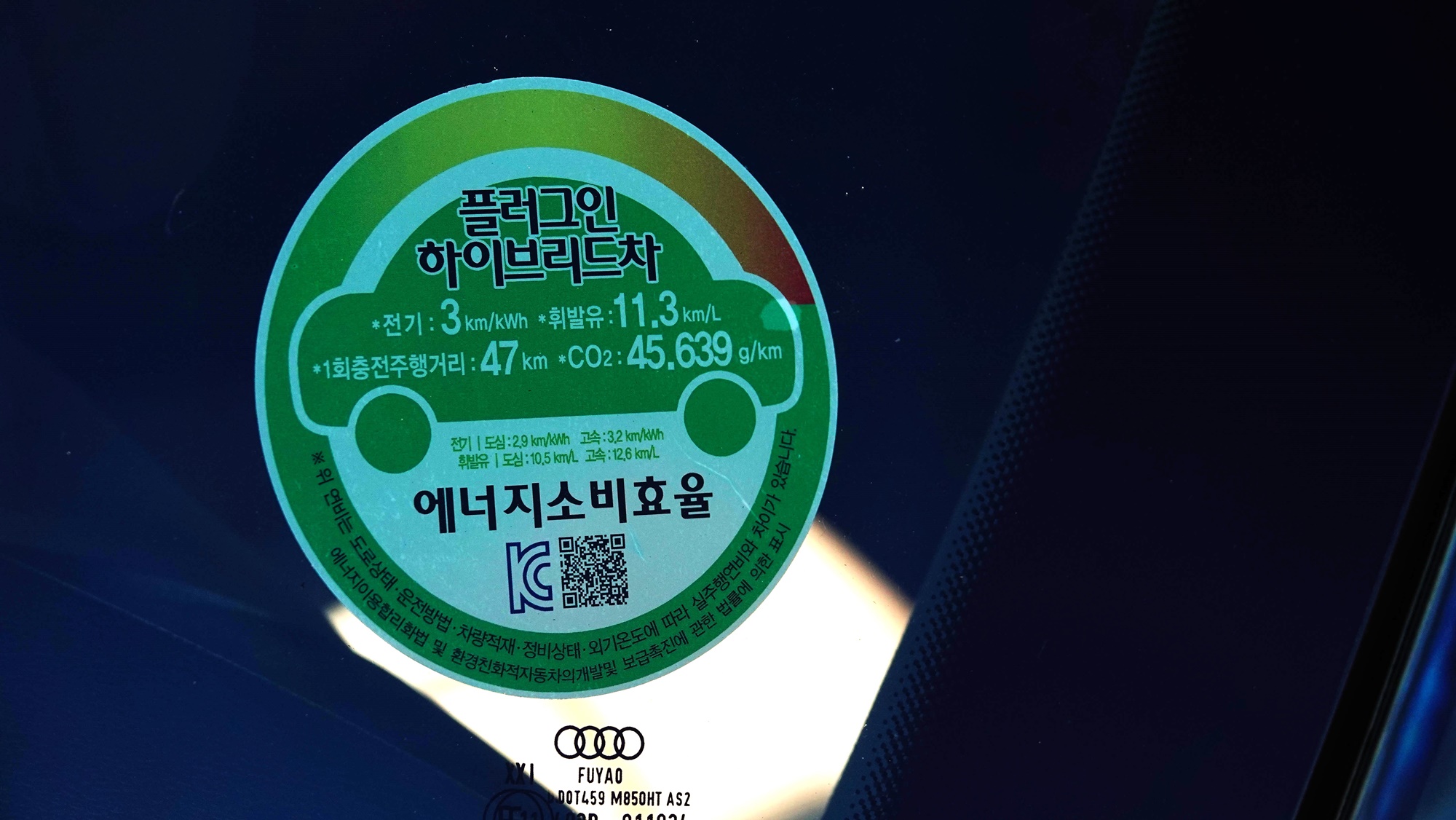
When the battery is fully charged, the electric driving range is 47 km. Depending on the situation, it may go further or fall short of that distance. If you stay focused on extending the range, you’re likely to surpass it. Even when the battery is low, it tries persistently to power through using the motor.
Driving modes include efficiency, comfort, automatic, dynamic, or individual settings. Additionally, the e-tron mode is available for selecting the powertrain configuration, allowing you to choose from EV mode, auto hybrid mode, or battery hold mode.
The comfort and luxury stemming from a quiet interior are immediately apparent. Both front and rear windows are equipped with double-laminated soundproof glass, effectively blocking noise intrusion, almost eliminating annoying sounds.
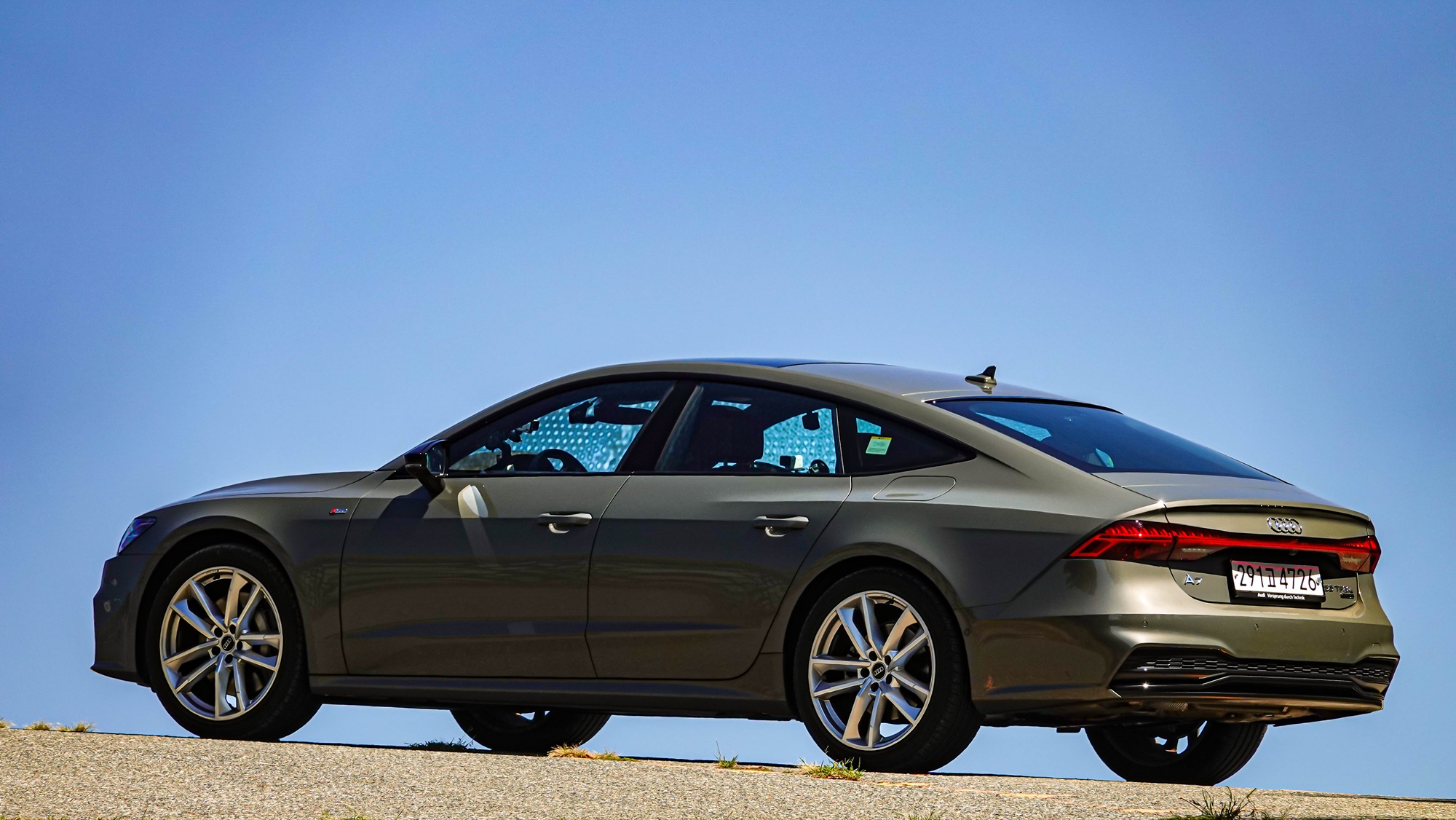
As the motor engages in driving, the driving experience becomes significantly smoother. Upon acceleration, the engine doesn’t take precedence; rather, the motor quietly and smoothly facilitates the push forward. The engine and motor operate in perfect harmony like two amicable siblings. As speeds increase, the engine noise is almost inaudible beneath the enveloping wind sounds.
Audi’s celebrated Quattro system contributes significantly to high-speed driving stability, allowing you to experience dynamic reassurance. The combination of a low seat position, 255/40R20 tire size, and the Quattro system enhances dynamic driving quality to a high level.
Fuel efficiency is showcasing the engine’s fuel economy and motor’s energy consumption separately, along with a combined economy figure. The engine boasts a fuel economy of 11.3 km/L, while the motor runs at 3 km/kWh. Browsing Audi’s website reveals a combined economy of 15.7 km/L.
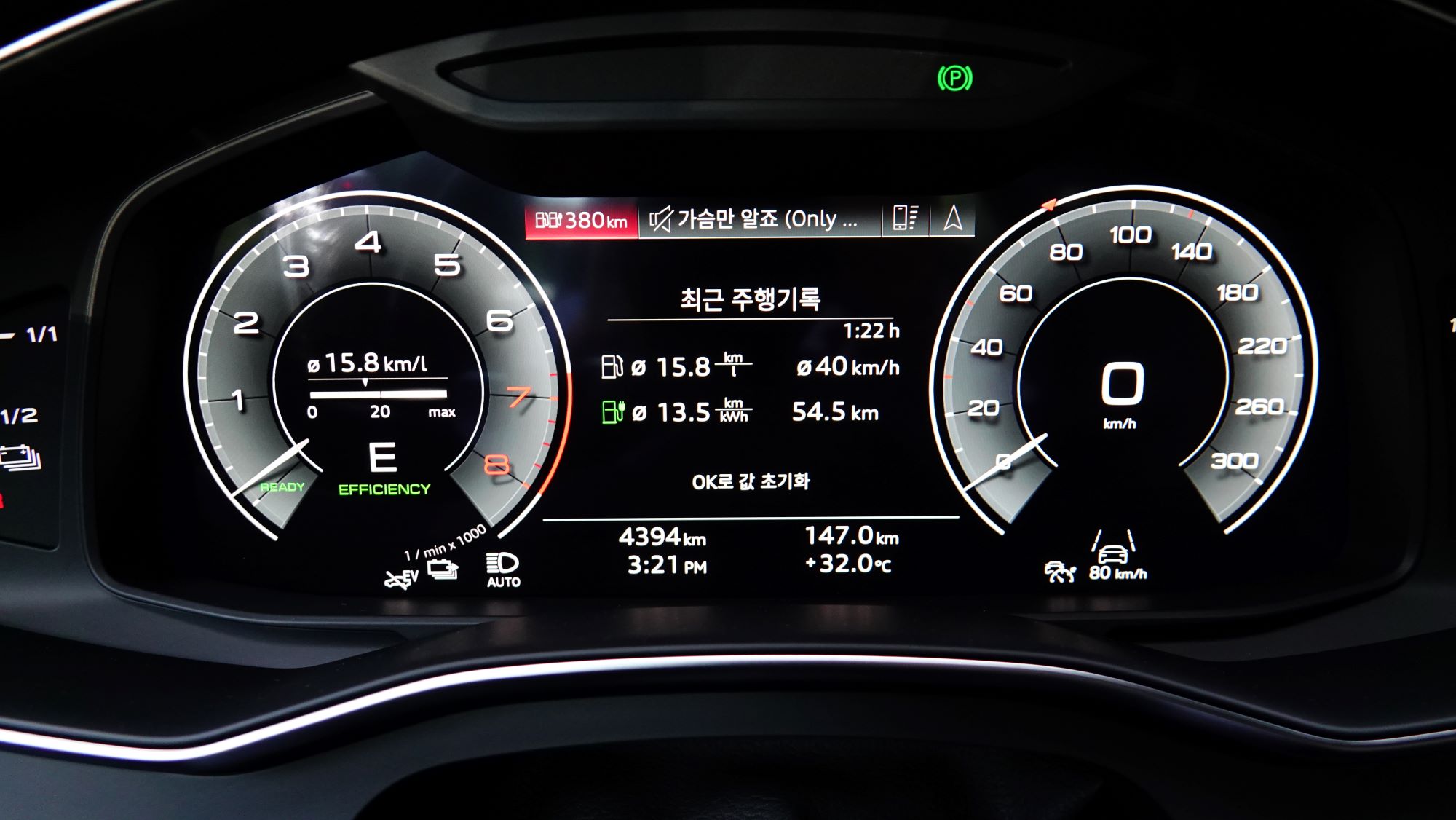
During the 55 km trip between Paju and Seoul, the meter displayed 15.8 km/L for the engine and 13.5 km/kWh for the motor. The motor’s fuel efficiency is particularly impressive, suggesting a confusing illusion might arise in the data presentation when the battery level is nearly empty, separating the measurements between the engine and motor. Otherwise, there’s no way to explain the fuel consumption exceeding the certified levels by four times.
With a sales price of approximately 100 million KRW, it’s set at
9,985,700 KRW. Given its stunning design, practicality as a 4-door, the convenience of not having charging hassles, and the premium badge of Audi, it’s definitely worth that price tag. The lengthy name “The All-New Audi A7 55 TFSI e Quattro Premium” hints at a wealth of features—this car has high aspirations and is undeniably desirable.
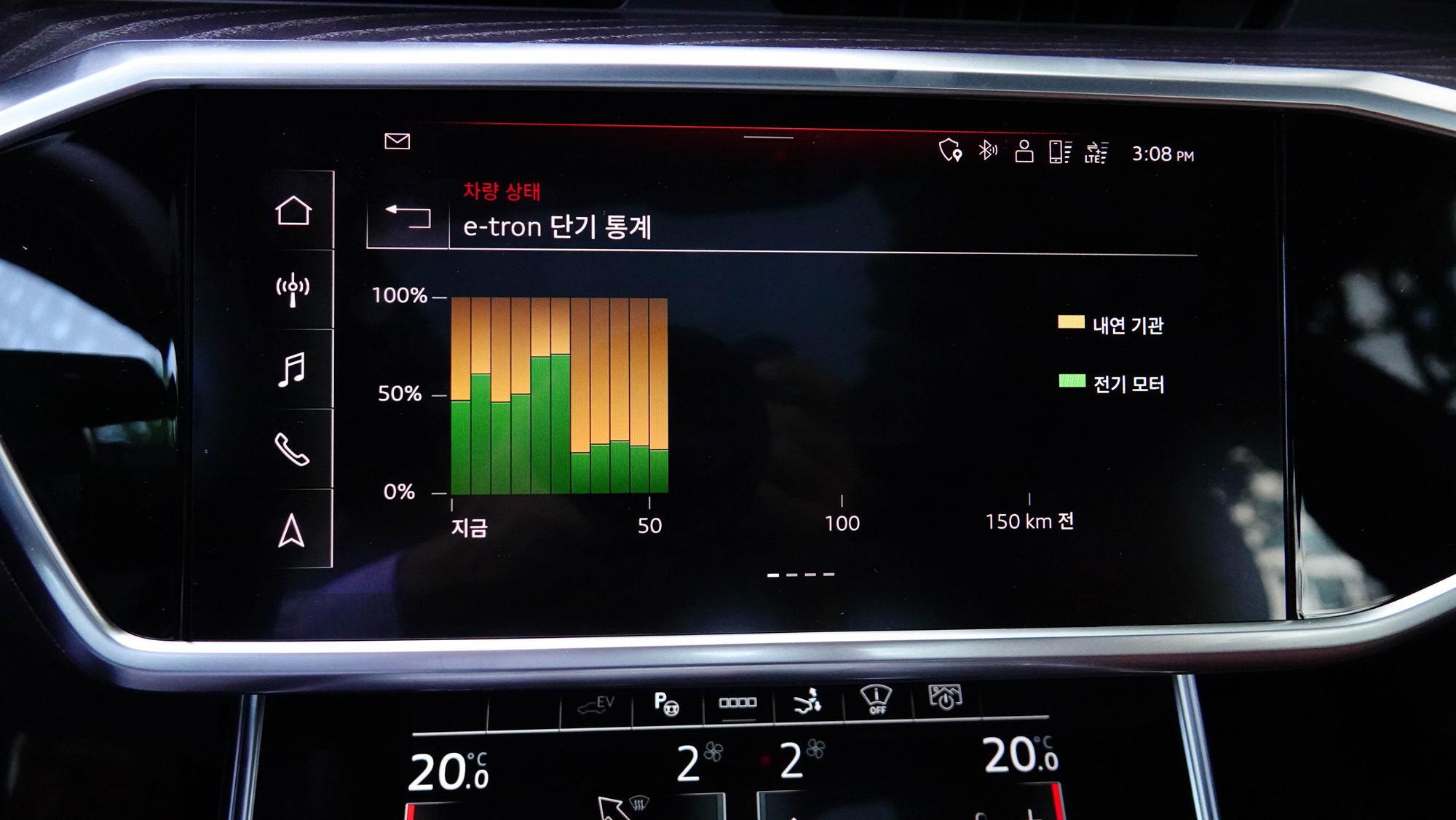
Direct Insights from Oh Jong-hoon
Visibility is restricted due to the low and elongated roofline—both the rearview mirror and camera module extend down to the central part of the front windshield. When waiting at a signal, you sometimes have to stretch your head forward to see the lights. During right turns, the rearview and camera module obstruct the view. I had to adjust my position to secure proper visibility.
To set the e-tron mode, it requires several taps on the screen. It should ideally allow setting the desired mode in one go for better usability, but the complicated navigation tends to deter attempts. Perhaps a separate dedicated button would be a useful addition.
Oh Jong-hoon yes@autodiary.kr


